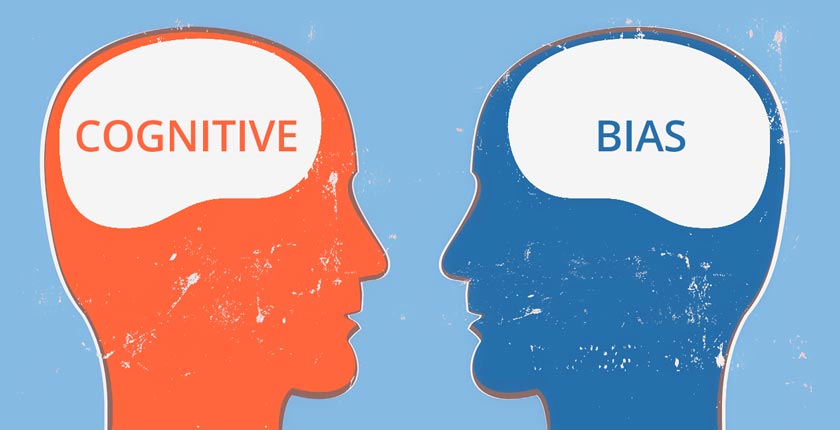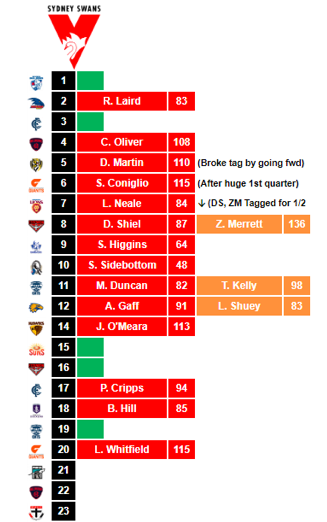daily fantasy sports articles
Understanding 'Substitution Bias' in DFS

In our next DFS Mindset article, we will be looking into ‘Substitution Bias’, a quick shortcut our brain uses to answer complex questions.
More specifically, when faced with computationally complex questions, our brain looks for a way to lower the calculation cost, decrease time to the answer and decrease effort. Substitution Bias can see us move into auto-pilot mode - when faced with a hard question, we often unconsciously replace it with an easier question. If the answer is “yes” to the easy question, it becomes a proxy answer for the original hard question. Making decisions in this manner can bring about several errors that can significantly hinder decision-making process.
SUBSTITUTION BIAS
SUBSTITUTION BIAS = occurs when an individual must make a judgment that is computationally complex, and instead substitutes a more easily calculated heuristic attribute.
To best understand how this cognitive bias works, we can try to figure out the small problem (below).
Example:
- A baseball bat and ball cost $1.10 combined
- The baseball bat costs $1.00 more than the ball
- How much does the ball cost?
Using our quick-fire brain, we would quickly minus $1.00 from $1.10 to get the answer, the ball costs 10c. Incorrect, we have failed to deconstruct the problem properly, if we conclude the ball costs 10c, then the baseball bat must cost $1.10 ($1.00 more than the ball). As we can see this would sum to $1.20 not $1.10 as the problem specifies.
Substitution Bias has quickly replaced critical and reflective problem solving, with a cognitive shortcut that lowers the calculation cost for our brain.
The answer:The ball costs 5c, making the baseball bat $1.05 (for a combined cost of $1.10)
We can see how responding with a snap call, lowered the calculation cost and time of decision making, but lead to an inaccurate answer.
How does this effect DFS?
DFS team construction and player selection is highly complex with multiple situational layers to consider. Looking at Substitution Bias from a player selection level, we encounter complex and uncertain problems on a regular basis. Weekly, we are faced with the tagging conundrum, trying to decipher which player on the team may be tagged. Below is an example of how, when faced with a difficult problem, we can create an easier question and use its answer as a proxy answer for the harder question.
Example: Will Luke Shuey be tagged?
Answer: Don’t know
Substitution Question: Has L. Shuey been tagged previously?
Substitution Answer: Yes
Final Answer: Yes L. Shuey will be tagged
As we can see, the original question was complex, uncertain and realistically impossible to answer unless you are the head coach. As such, we instead created a related but easier question and used its answer as a proxy for the first question. But this new question, doesn’t actually answer our question, it answers a related question. So how do we adequately try and avoid Substitution Bias and answer complex and difficult questions?
How to combat Substitution Bias
As our brain looks for shortcuts to reduce the effort of information processing, we can be lulled into making comfortable decisions that come to us easily. This is the first sign that Substitution Bias may be in effect. We may be faced with a difficult question, yet we are easily able to access an associated answer to the question.
When this occurs, we can do two things.
- Stop and think through the question before drawing conclusions quickly
- Reverse the question
By slowing down and not making quick snap decisions, we afford ourselves the time to properly think through the question, highlighting that we don’t actually have an answer for it. Avoiding the mistake of substituting another answer for what we don’t know.
Secondly, once we have identified and avoided Substitution Bias, we can turn the question on its head.
Example
Question: Will L. Shuey be tagged?
Reversed Question: Will L. Shuey not be tagged?
This provides a different perspective on the question, allowing us to work through the problem in a different manner. In this instance, we can answer the second question using the Daily Fantasy Rankings Tagging Resource. Looking through the 2018 and 2019 seasons, we can find a few interesting facts to help us answer the question.
- L. Shuey was tagged 5 out of 36 games (14%)
- Sydney tagged him 3 of those games
- Not including Sydney games he was tagged 2 times (6%)

Using this reversed question, it has nudged us to look at the question from a different perspective. Instead of concluding immediately that L. Shuey will be tagged, because he has been tagged before (probably correct if it’s Sydney), we can now decide based on historical trends.
Original Answer: L. Shuey will be tagged
New Answer: L. Shuey was tagged in 14% of his games, without Sydney only 6%.
While we could have used Daily Fantasy Rankings Tagging Resource from the beginning, it can be easy for our brains to unconsciously decide the answer before we have had a chance to investigate it further. Therefore, it is important to slow down and ask ourselves if we really trust our answer. If not, we may be substituting another answer and instead need to look at reversing the question to gain a fresh perspective on the problem.
2. Dealing with 'Anchoring Bias' in DFS
3. Understanding the Effects of 'Belief Bias' in DFS
4. Understanding 'Framing Effect' in DFS
5. Dealing with 'Information Bias' in DFS
6. Overconfidence and Optimism Bias in DFS





